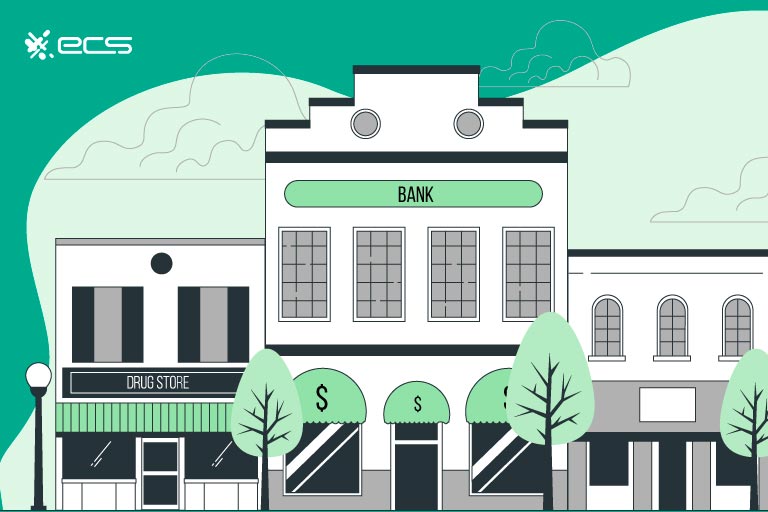Looking for a new payment processor? You may be considering your merchant bank for credit card processing. If you’re like most business owners, there’s a good chance you already have a business relationship with a bank. And there’s also a good chance that you’ve let a payment processing company collect your customer payments.
Alternatively, you might be one of the millions of merchants using a platform like Shopify. Or perhaps you’ve just started a business and have never worked with a payment processor.
Whatever the case may be, you might be tempted to turn to your merchant bank for merchant services like payment processing. After all, why not? You’re already doing business together. But in this article, we will explain how banks may not be the best merchant services to work with.
Spoiler Alert: Banks Are About Making Money
It’s no secret that banks are in the business of making money. They primarily do this by accepting consumer deposits and then loaning the cash-out. If that doesn’t work out, they can always ask the Federal Reserve to print them more money (that’s for a different article). But another way they make money is by charging fees.
And one gold mine of fees for banks is the products and services they sell to business owners. Consumers certainly face their fair share of fees. Monthly maintenance fees, overdraft fees, and insufficient funds fees are some of the more common culprits. But the real victims of bank fees are merchants—especially merchants who use their bank to accept and process credit and debit cards.

What Do Banks That Offer Merchant Services Do?
First, let’s start with a general overview of merchant services from banks. Banks provide business checking accounts that can do more than a consumer checking account. Business bank accounts can often pull ACH deposits, for one—something that consumer checking accounts cannot do. To clarify, consumer checking accounts can accept ACH deposits (like payroll) and allow ACH deposits to be pulled (like bill pay).
Just as most banks these days charge consumers a monthly service fee unless a minimum balance or minimum deposit requirement is met, so too with business checking accounts. Unfortunately, however, the requirements for business checking accounts are going to be steeper—and so are their fees.
You might be required to keep several thousand dollars in your business checking account, or face fees of $50 or more. Of course, for most businesses, this threshold is not a problem. But the monthly maintenance fee is not the only fee applied to a merchant account.
Accepting payments will also come with other fees. If you accept more than 200 payments per month, you’ll be subject to transaction limit fees. If you deposit too much cash, you’ll be subject to a cash deposit fee.
Why Do Banks Charge Fees, Again?
If you’re wondering why banks have to charge all these fees, it’s because they are in the business of making money by managing money. But in addition to that, they have large enterprises with sizable operating expenses.
Large brick-and-mortar banks tend to have steeper fees to cover things like customer service, human resources, and tight regulatory climates. For instance, banks must have 10% of their total deposits in an immediately accessible reserve.
Most merchants find that once they reach a certain processing volume, it is no longer convenient to work with one of the Four Horsemen of the Banking Apocalypse. What those processing volumes are will vary from Chase to Citi to Bank of America to Wells Fargo (if we may call these horsemen out), but the end result is the same.
What About My Local Bank?
Most small businesses consider the best merchant banks to be local or regional banks. These smaller banks have lower operating costs and are subject to (somewhat) less regulation. They are also entrenched in their specific markets with less likelihood of plans to expand. With all these factors leading to lower operational costs, they can charge lower fees.
Local and regional banks are also reputed to have better customer service. There’s a better chance that a business owner can speak directly to someone with decision-making power, rather than a branch representative.
Of course, behemoth banks try to replicate this ambiance by opening local branches, but the bankers therein often have pretty limited decision-making power. By contrast, local banks can create a true sense of partnership.
Whatever type of bank you’ve chosen—and certainly if you’re working in a long-term partnership with a local bank—it may seem tempting to sign up for merchant services with your bank. Banks do a good job of packaging and presenting financial services, making them seem streamlined. Signup processes are easy (except for getting a mortgage).
The whole experience can feel as glossy as a brochure with stock images on the banker’s desk. But diving a little deeper into the nuts and bolts of a merchant bank processor, you will see that there are better packages out there. This is often true of large banks, and often true even of smaller local or regional banks

Merchant Account Versus Merchant Services in General
First, let’s clarify the difference between a business bank account and a merchant account. A business bank account is a place to deposit and store money, much like a consumer-facing checking account.
A merchant account, by contrast, is a kind of intermediary point where funds from payments are temporarily stored. Merchant accounts help business owners with accepting credit cards and mobile payments. And merchant services refer to some of the services related to accepting payments from debit and credit cards.
This payment processing is subject to transaction fees. The pricing structure may involve some flat rate pricing or tiered pricing, the latter of which is common for banks to offer. For most small and midsize business owners, both types of fee structures are going to have more disadvantages than advantages.
The Woes of Tiered Pricing
First let’s start with tiered pricing because it’s a fairly common model for banks that offer merchant services. Tiered pricing is often broken down into three groups: qualified, mid-qualified, and non-qualified.
Qualified cards used to make payments are debit cards and credit cards without rewards. Mid-qualified cards are often reward cards. And non-qualified cards include international credit cards, corporate cards, and card-not-present transactions. CNP transactions are (as you might guess) interactions where the customer is not in front of you, like online.
The tier with the highest fees is the non-qualified tier, as it presents the most risk. After that is mid-qualified, and below that is qualified. As you can see, this is not going to work for a lot of merchants. Every online purchase is a CNP transaction.
Similarly, you’ll get dinged for accepting corporate credit cards. B2B business is often the best kind of business (with bigger and more consistent orders), but tiered pricing punishes merchants engaged in it.
And guess what…QR codes are also run as CNP transactions. If your business is shifting to QR codes (such as a bar, restaurant, or food truck), tiered pricing is going to skim some cream off the top for your bank.
Fees Help Banks CYA
The thought behind the tiered pricing model is that it covers risk (fraud and chargebacks). Card-not-present transactions are subject to more fraud than card-present transactions. Making an online payment usually just requires inputting credit card information. By contrast, making a payment in person can involve extra layers of security, such as inputting a PIN, or having the merchant request an ID if the transaction seems suspicious.
Banks certainly need to mitigate their risk, as we’ve seen time and time again. From the Stock Market Crash of 1929 to the Subprime Lending Crisis of 2008, the world has seen that even the biggest banks are not too big to fall, even if temporarily. Fees help cover their…you know.
Today, banks have tighter lending requirements than ever before. The APYs they offer on checking accounts and even CDs are far lower than what they used to be. One might say banks have become rather tightfisted.
Of course, banks do need to mitigate risk, since they are holding other people’s money (and actually, they’re loaning it out). But in the process of mitigating their risk, they pass off the costs to merchants like you.
Are Flat Rate Fees Any Better?
Now on to flat-rate fees. This model seems rather convenient because it seems like simple, transparent pricing. But behind the simplicity is a complexity that’s padded with extra profit for the bank. In reality, different payment methods have different costs.
A virtual terminal accepting contactless payments is different from a POS system taking PINs and signatures. But with flat rate pricing, half a dozen of one becomes six of the other (okay, maybe that wasn’t the best metaphor).
So what’s the solution instead of merchant bank credit card processing? Sometimes a bank will have merchant partners for credit card processing. But like shopping for anything, getting steered toward one particular service provider may not be in your best interests.
It’s better to shop around and find a payment processor that will be best for you. A partnership with the bank may place limitations on how their partners can structure their pricing models, for one. This results in pricing that is somewhat beyond the influence of discussion.
There are plenty of payment processors out there who can also provide a merchant account. You may end up doing some mixing and matching between your bank and your payment processing company in terms of who covers what. But when it comes to accepting cashless payments, a company that focuses exclusively on merchant services is the way to go.

Merchant Services Providers Also Offer Banking Services
We should mention that some merchant service providers also offer banking services. In this way, they are similar to the numerous fintech companies that have sprung up in the last decade or so. These digital banks often provide better interest rates and lower fees than their brick-and-mortar competitors, because they have no consumer-facing office locations to manage—saving lots of money on office furniture and fake plants.
Speaking of banking services, payment processors may also offer financial products like loans. One type of loan is the merchant cash advance. The extension of this advance is tied into your sales volume, which the merchant services provider is obviously privy to (since they service it).
The repayment of this advance is often drawn directly from your sales volume. Banks and their strict underwriting requirements cannot offer this type of immediate funding.
Do More With Payment Insights From Your Processor
Another reason to find a payment processor for merchant services is that they can offer or integrate with other backend business processes. Analytics, invoicing, accounting, and inventory are just a few of the ways that a payment processor can outdo a bank on the customer service end.
For example, the payment processing solutions offered by a merchant services company may integrate with analytic software, or offer analytics itself. These are numbers based on customer behavior and spending patterns. The data is mined from the hardware at the point of sale of the online payment gateway.
Business owners can use this data to make tailored suggestions, arrange store layouts, and offer sales on certain days. Customer insights can also be used to manage inventory. While some banks are beginning to offer these types of analytics to customers, they are behind other tech companies for whom big data is a primary offering.
And while payment processors are not specifically in the big data business, they have more experience collecting information about customer behavior. And they have more experience turning that behavior-driven data into readable, dashboard-accessible insights.
The Best Merchant Services: A Wrap-Up
As we said at the outset, banks are in the business of making money. And so are payment processors, of course. But payment processors have some advantages over banks. They have less operating overhead.
They are less regulated than banks, especially big banks because they are not responsible for satisfying consumer deposit demand (e.g. withdrawals from a checking account). This means they can get away with investing less in risk management against their own losses (e.g. bounced payments from customers and fraud).
The end result is lower fees, fewer fees, and better fee structures for you. And in concluding this article, we should also mention that there are many types of businesses that banks won’t work with anyway.
Certain high-risk industries like supplements, adult entertainment, gambling, CBD, and even credit repair are a no-no for banks in terms of merchant processing. So are companies with a bad credit history, or even ones that suffered from chargeback-related fraud. This is true even if the fraud was not your fault.
The upshot of these particular limitations is that for many business owners, banks are not an option. And for those businesses for which they are, a third-party payment processor will still be better in terms of your margin.
To learn more about how we can help you accept debit and credit card payments, give us a call or fill out the form below. In addition to these core merchant services, we provide some of the other merchant services highlighted in this article.
